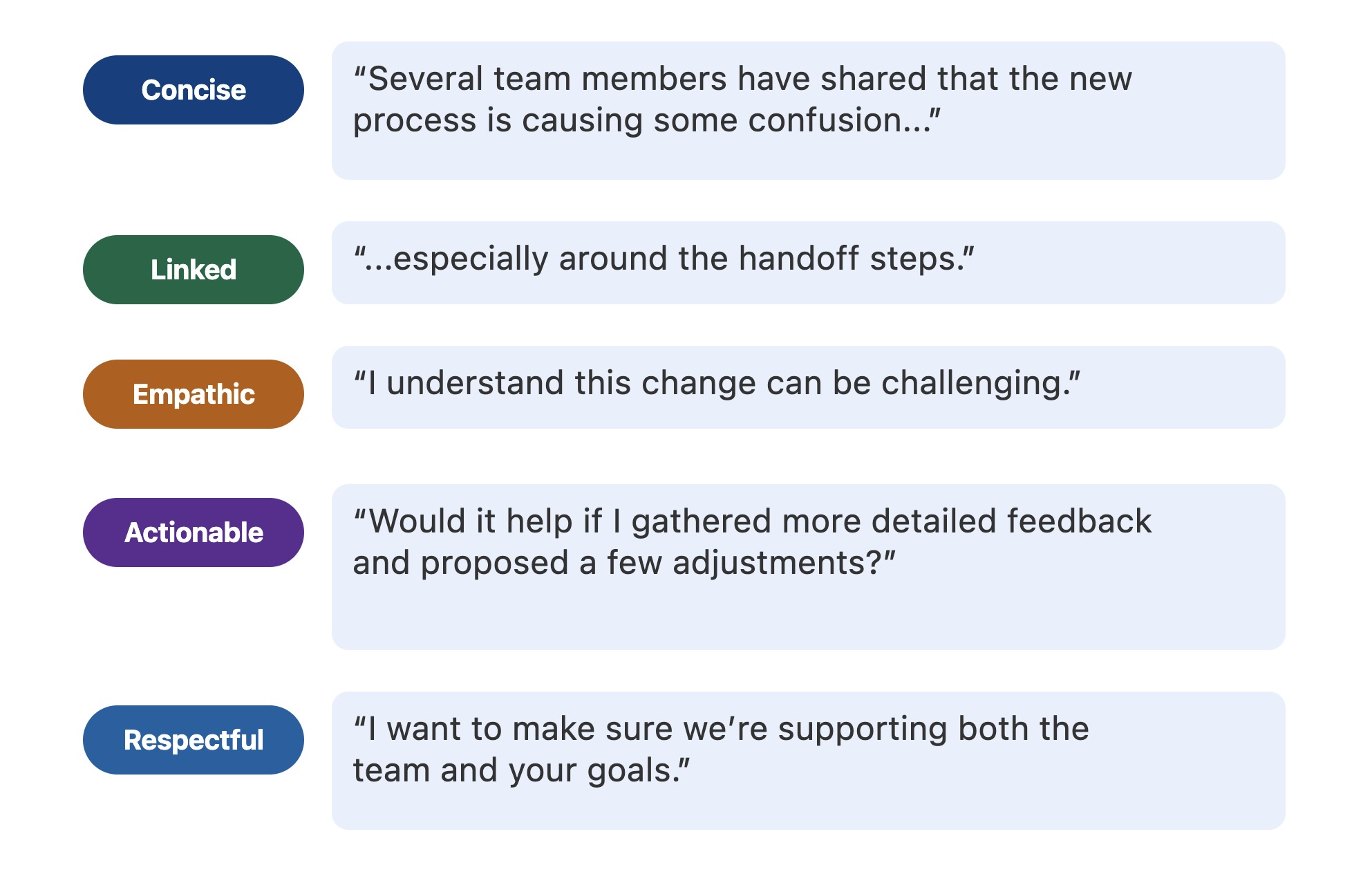As the connector, you’re the vital link between your executive and the broader team. You help information flow smoothly, ensure team voices are heard, and keep everyone aligned as priorities shift or projects evolve. Mastering these skills helps you bridge the gap, prevents misunderstandings, and drive positive change that keeps both your executive and team moving forward together.
When sharing information from your executive to the team, clarity and accuracy are your top priorities. Your words set the tone and direction, so be precise and constructive.
In these situations, it is important to:
- Highlight both urgency and positive outcomes
- Be concise and direct in your wording to
- Show empathy to the team
Here is a realistic example of how this may look in a professional setting with an executive assistant and a team lead:
- Jake: Hi Dan, I wanted to update you on the project timeline. Based on the client’s latest feedback, we’ll need to extend the deadline by one week. The good news is the client is really pleased with our progress and they just requested a bit more detail in the final report.
- Dan: Thanks for letting me know, Jake. Is there anything specific the client wants us to focus on during this extra week?
- Jake: Their main request is for more detail in the final report. I know this is a quick turnaround, and I appreciate how hard the team’s been working. Please let me know if anyone needs support or clarification. I’m here to help.
- Dan: I appreciate that. I’ll share the update with the team and let you know if we have any questions.
- Jake: Thanks, Dan.
In this exchange, Jake delivers an urgent update with clarity, highlights the client’s positive feedback, and shows empathy for the team’s workload. His concise, supportive approach keeps Dan informed and reassured while maintaining a constructive tone.
It’s also important to verify details before sharing them with the team to ensure accuracy and confirm that the information is relevant and necessary for them to know.
With so many digital channels, it’s easy for updates to get lost. Your job is to help streamline communication so everyone stays informed and nothing falls through the cracks.
-
Recommend a single source of truth for key announcements, like a dedicated Slack channel or weekly summary email.
“Let’s post all project updates in the #project-announcements channel so everyone stays informed and nothing gets missed.” -
If updates are scattered or unclear, offer to consolidate them:
“Would you like me to pull together this week’s updates into a single summary for the team?”
This reduces confusion and ensures everyone is working from the same information.
You also serve as a trusted voice for the team when communicating with the executive. Think of yourself as a translator at a diplomatic meeting—you don’t just relay words, but ensure the message is clear, respectful, and focused on finding solutions that work for everyone.
A helpful approach here is the CLEAR framework:
- Concise: Be brief and to the point.
- Linked: Connect feedback to specific situations or goals.
- Empathetic: Show understanding of others’ perspectives and feelings.
- Actionable: Suggest clear next steps or solutions.
- Respectful: Communicate in a way that maintains trust and professionalism.
An example could be that you received feedback from the team that they're feeling frustrated regarding a new process that the executive decided to try out. Instead of saying, "The team hates the new process", try "Several team members have shared that the new process is causing some confusion, especially around the handoff steps. I understand this change can be challenging. Would it help if I gathered more detailed feedback and proposed a few adjustments? I want to make sure we're supporting both the team and your goals." This uses the CLEAR framework to help advocate for the team while supporting the executive's goals, ensuring communication is focused, empathetic, and solution-oriented.

By practicing these skills, you’ll help your executive and team stay connected, aligned, and ready to tackle change together. In the next activity, you’ll get to practice navigating real-world scenarios as the connector between your executive and the team.
